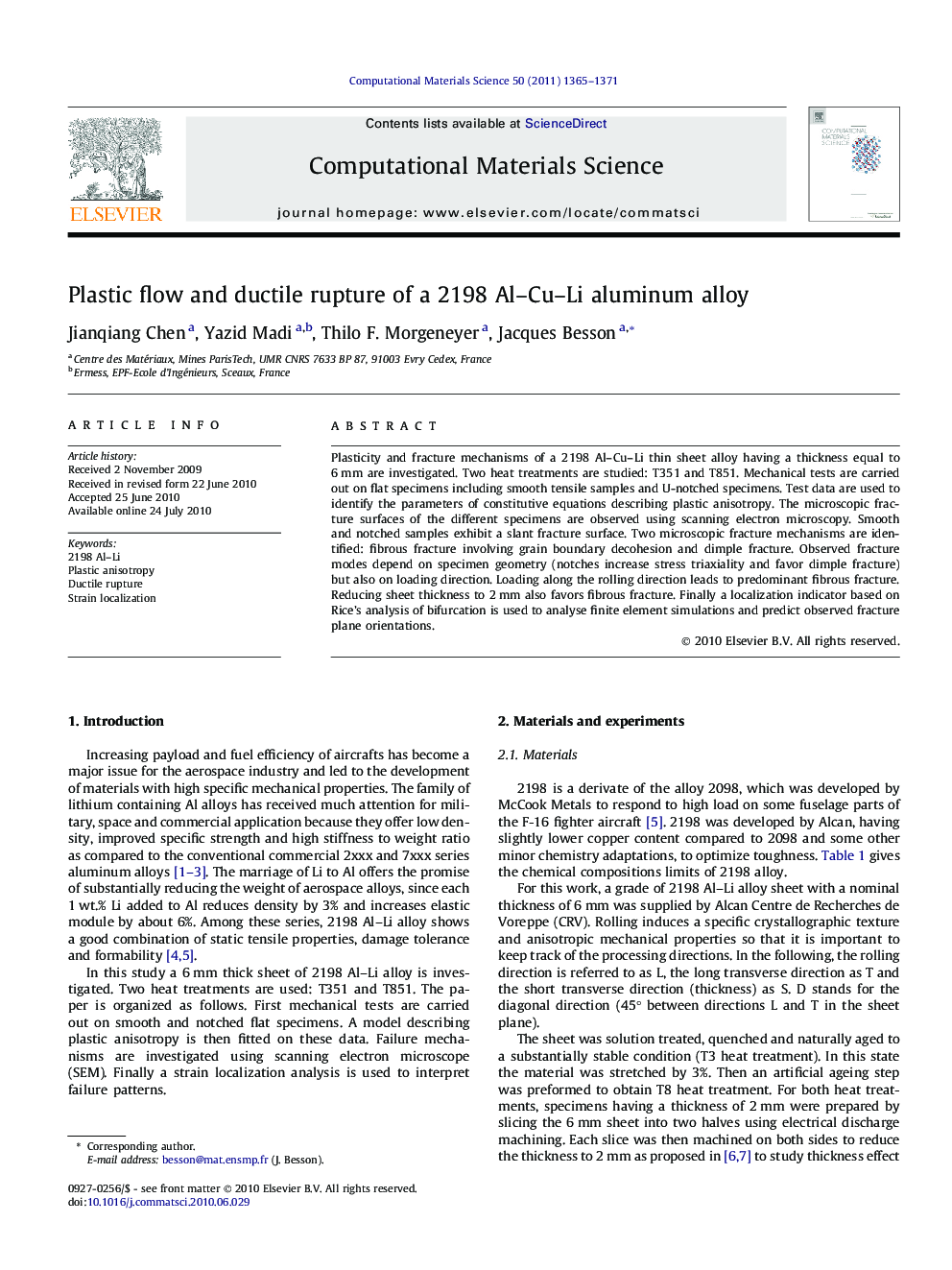| Article ID | Journal | Published Year | Pages | File Type |
|---|---|---|---|---|
| 1562151 | Computational Materials Science | 2011 | 7 Pages |
Plasticity and fracture mechanisms of a 2198 Al–Cu–Li thin sheet alloy having a thickness equal to 6 mm are investigated. Two heat treatments are studied: T351 and T851. Mechanical tests are carried out on flat specimens including smooth tensile samples and U-notched specimens. Test data are used to identify the parameters of constitutive equations describing plastic anisotropy. The microscopic fracture surfaces of the different specimens are observed using scanning electron microscopy. Smooth and notched samples exhibit a slant fracture surface. Two microscopic fracture mechanisms are identified: fibrous fracture involving grain boundary decohesion and dimple fracture. Observed fracture modes depend on specimen geometry (notches increase stress triaxiality and favor dimple fracture) but also on loading direction. Loading along the rolling direction leads to predominant fibrous fracture. Reducing sheet thickness to 2 mm also favors fibrous fracture. Finally a localization indicator based on Rice’s analysis of bifurcation is used to analyse finite element simulations and predict observed fracture plane orientations.
